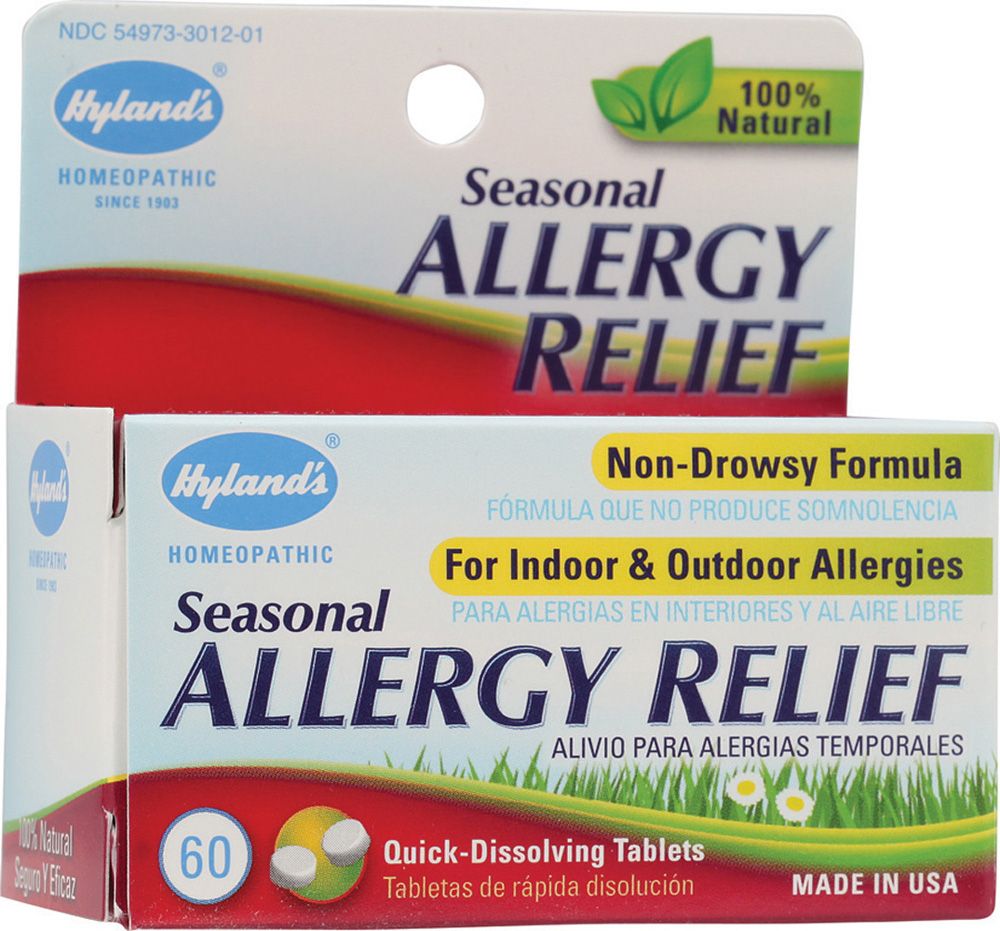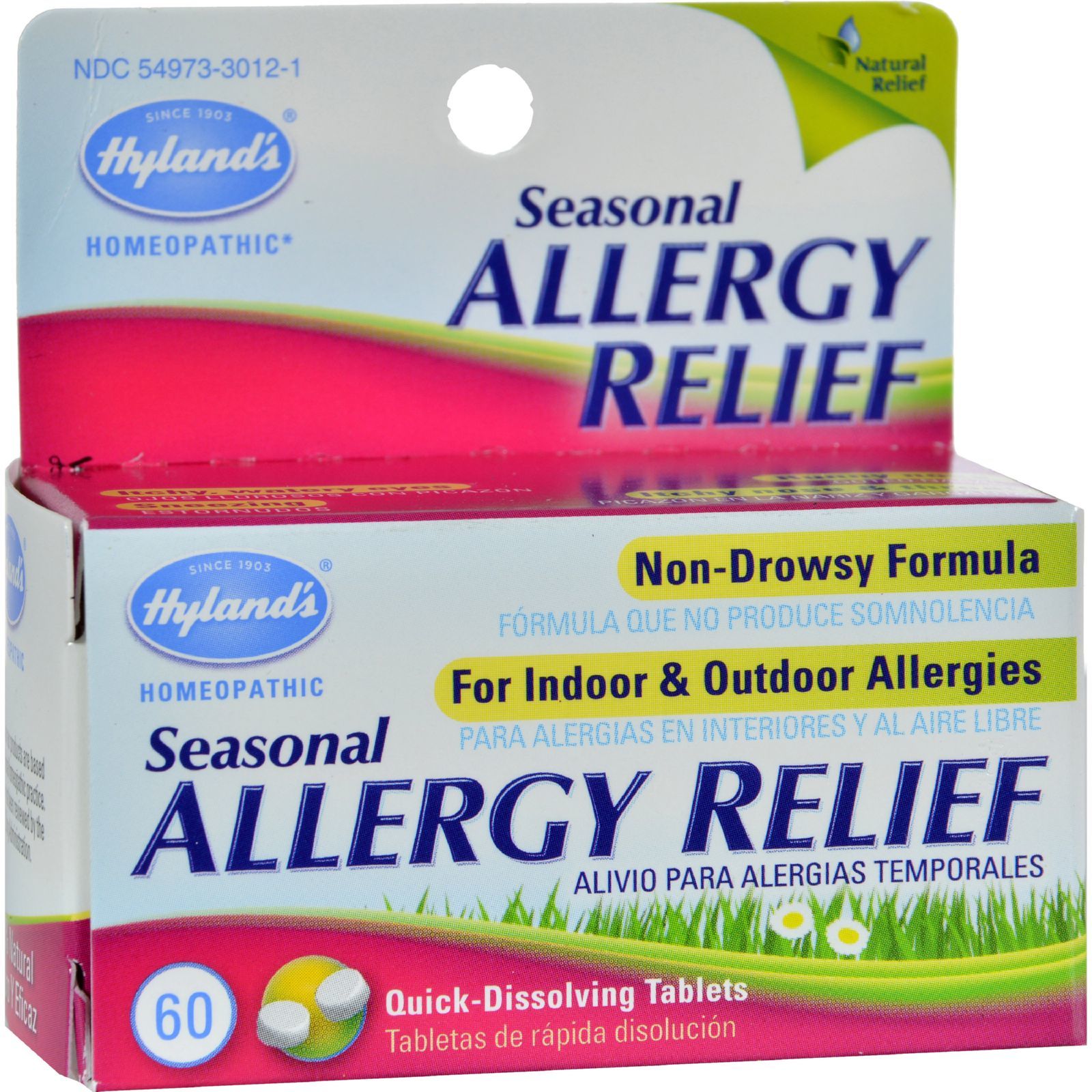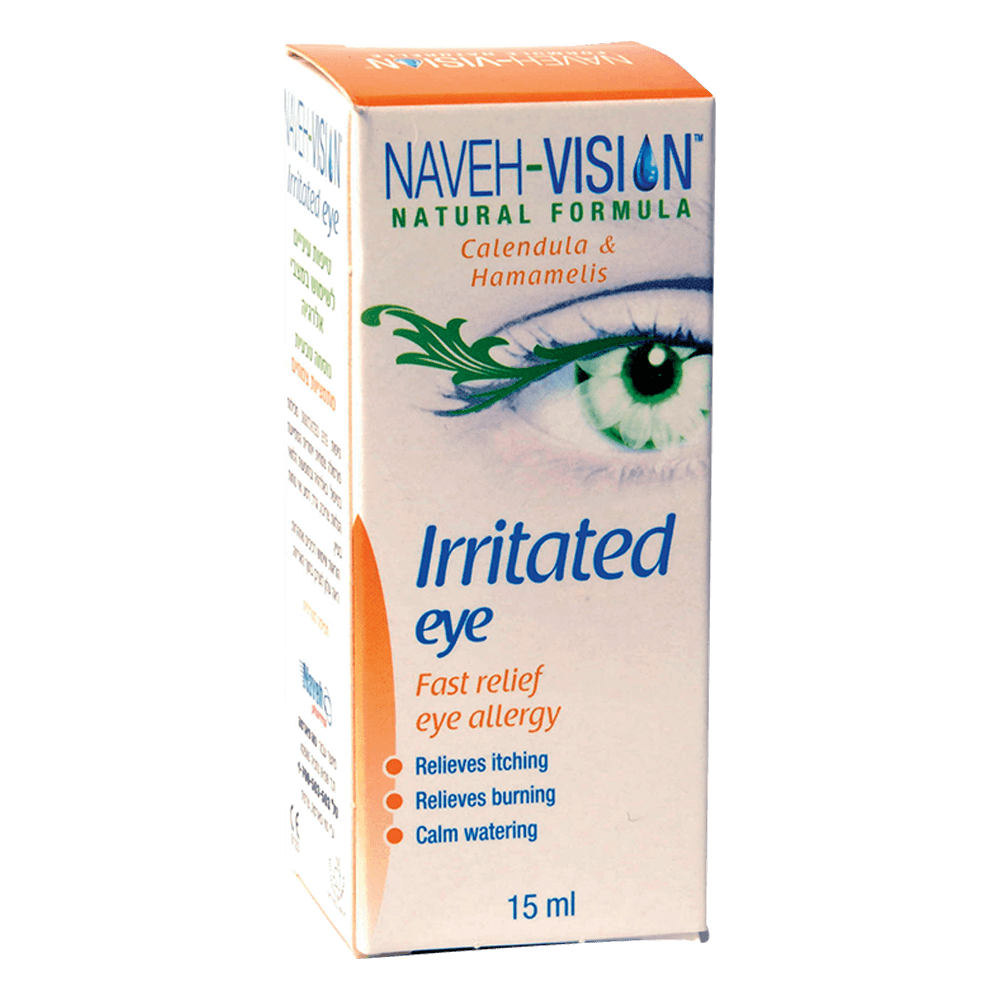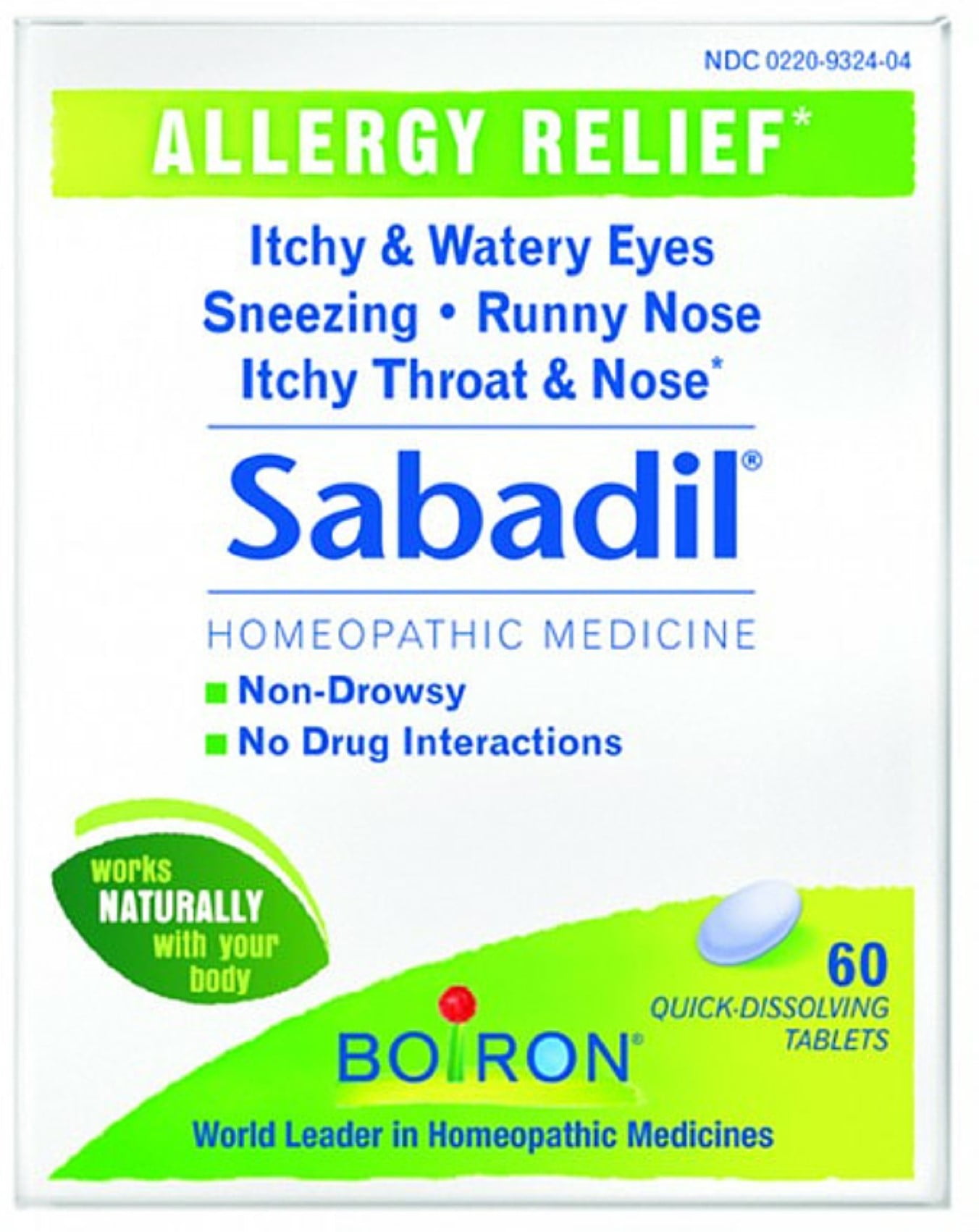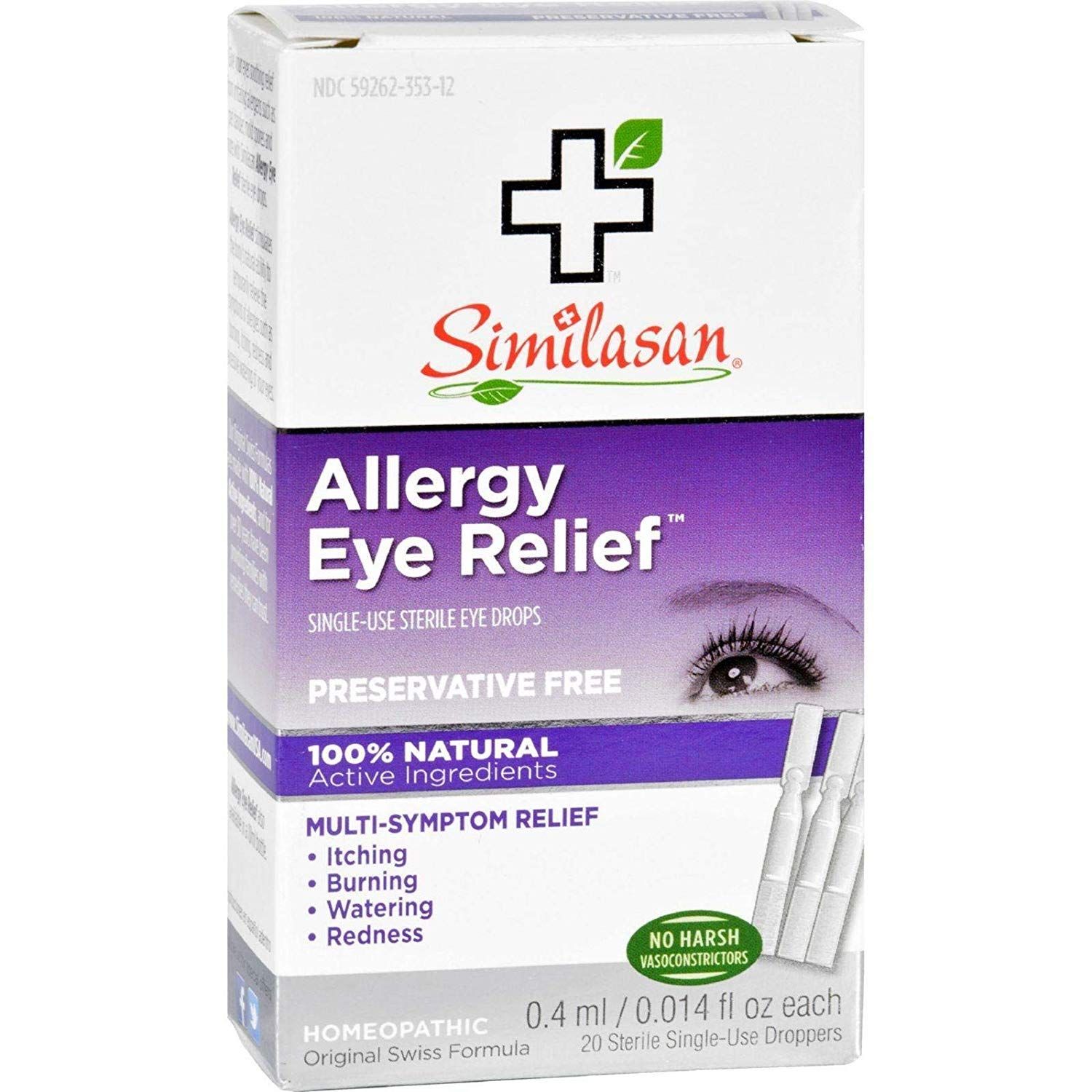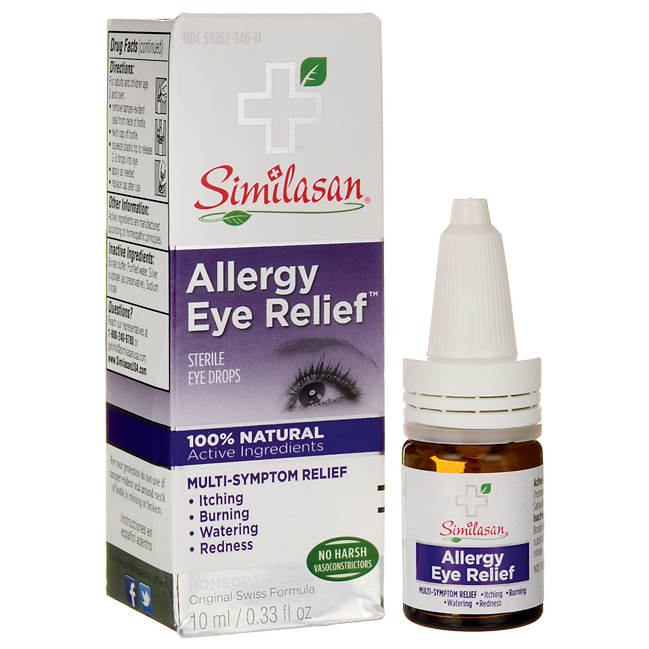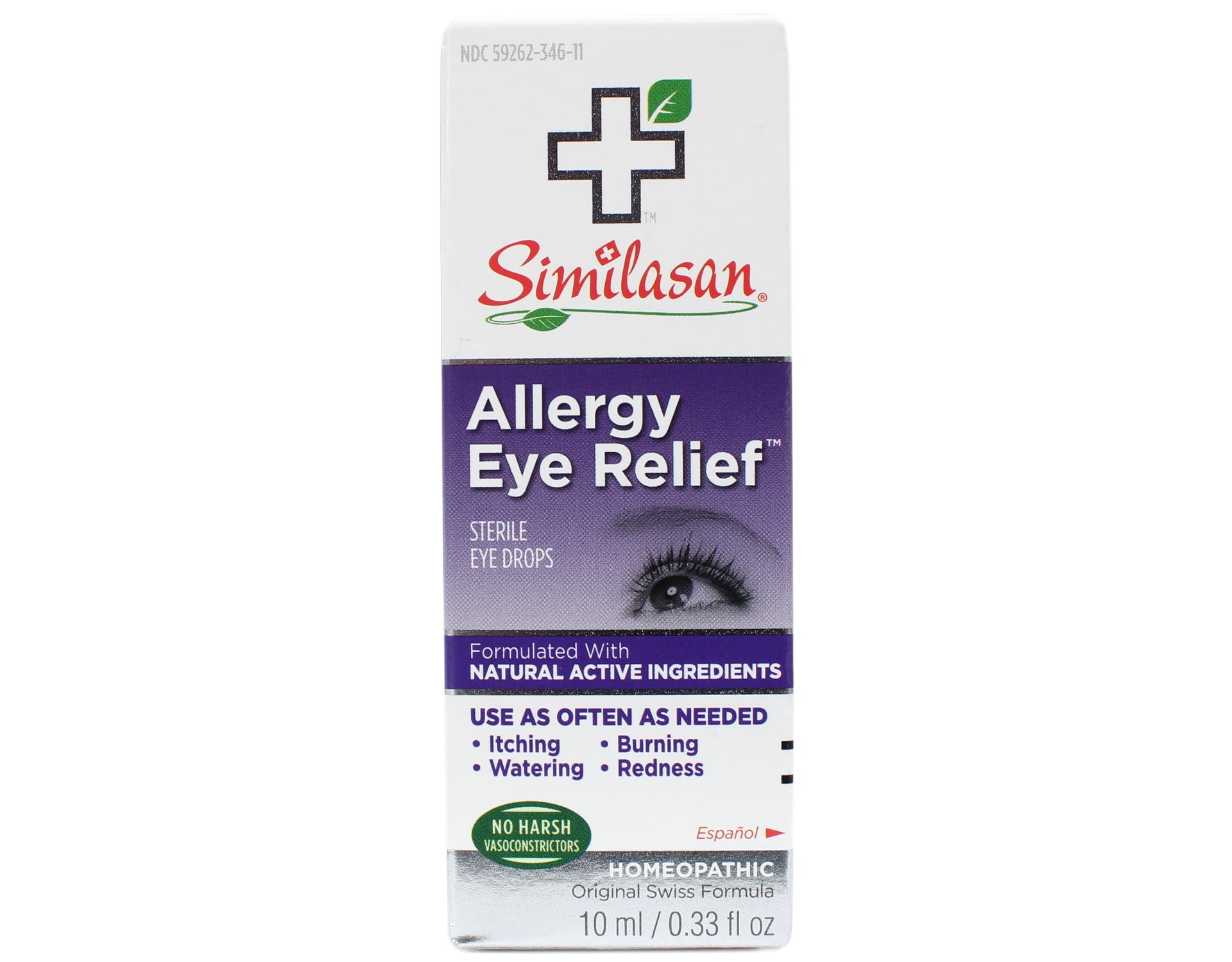Natural eye allergy relief. Uncovering Natural Solutions for Eye Allergies: A Comprehensive Guide
What are the most effective natural remedies for eye allergies? Discover a range of natural solutions to alleviate eye irritation, redness, and other allergy symptoms. Get expert insights and practical tips to find relief.
Identifying the Common Causes of Eye Allergies
Eye allergies, also known as allergic conjunctivitis, can be triggered by a variety of environmental factors. The most common causes include:
- Pollen from trees, weeds, and grasses
- Dust mites
- Pet dander, especially from cats and dogs
- Mold
Seasonal Allergic Conjunctivitis (SAC) is typically caused by outdoor allergens, while Perennial Allergic Conjunctivitis (PAC) is usually triggered by indoor allergens. Understanding the source of your eye allergies can help you tailor your treatment approach.
Recognizing the Symptoms of Eye Allergies
The most common symptoms of eye allergies include:
- Itching and irritation
- Redness
- Tearing
- Burning sensation
- Matted eyes, especially upon waking
- Mucous production
- Mild swelling around the eyes
It’s important to note that eye pain, blurred or double vision, and decreased vision are not typical symptoms of eye allergies. If you experience these, it’s best to consult a healthcare professional.
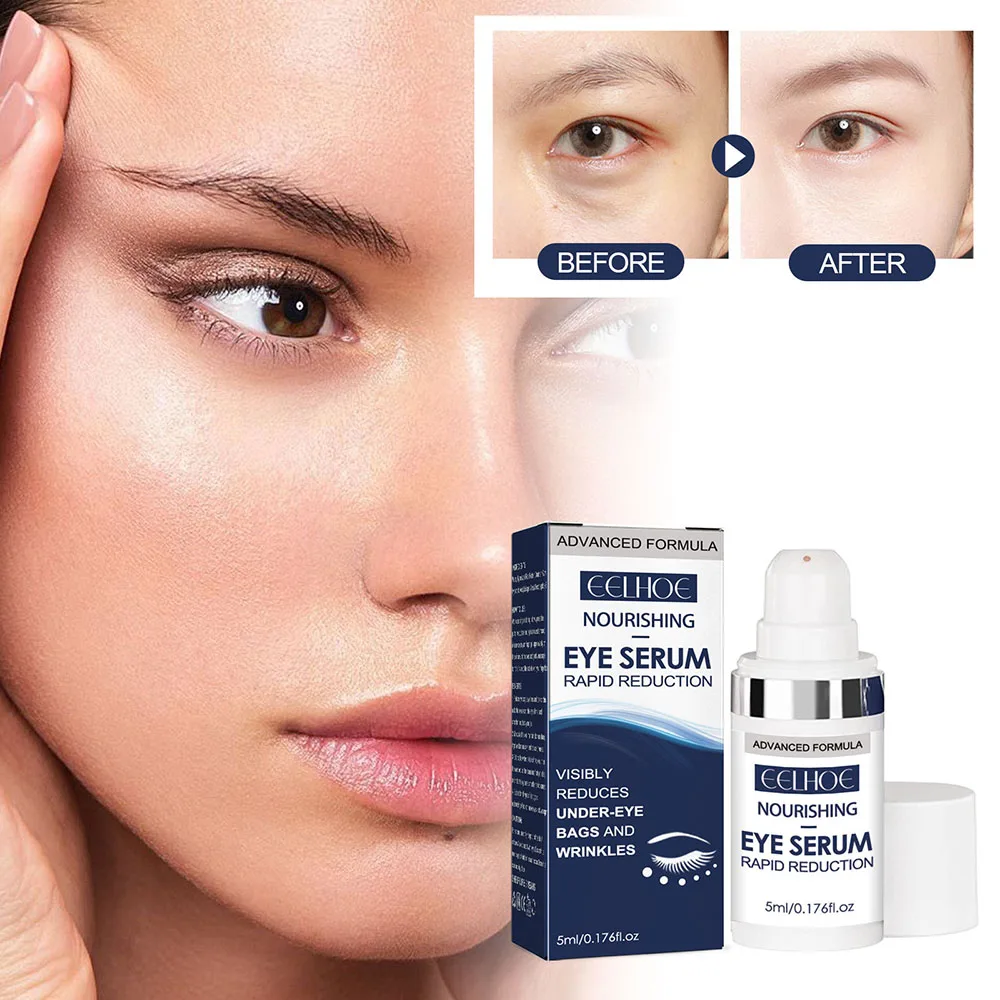
Natural Remedies for Soothing Eye Allergies
Fortunately, there are several natural remedies that can provide relief for eye allergies. Here are some effective options:
Keep Windows Closed
One of the simplest and most effective natural remedies is to keep your windows closed, especially in the morning when pollen levels are typically highest. This helps prevent the allergens from entering your home and eyes.
Wear Wraparound Glasses or Sunglasses
Wearing wraparound glasses or sunglasses can create a barrier that keeps pollen and other allergens from reaching your eyes. This can provide a significant level of protection and relief.
Use Cool Compresses
Applying a cool compress to your eyes can help soothe swelling and irritation. You can use frozen vegetables, chilled cucumber slices, or even cooled tea bags for this purpose.
Try Apple Cider Vinegar
Mixing a tablespoon of apple cider vinegar with a cup of water and using cotton balls to gently apply the solution around your eyes can help provide relief. However, be cautious not to get the solution directly in your eyes, as it can cause a burning sensation.

Utilize a Humidifier
Running a humidifier in your living and sleeping spaces can help knock down pollen and other allergens, creating a more comfortable environment for your eyes.
Follow the 20/20/20 Rule
To reduce eye strain from prolonged screen time, follow the 20/20/20 rule: every 20 minutes, look away from the screen and focus on an object 20 feet away for 20 seconds. This allows your eyes to relax and can help alleviate allergy symptoms.
Use Artificial Tears or Over-the-Counter Eye Drops
Artificial tears or over-the-counter eye drops can help flush out irritants and provide temporary relief for eye allergy symptoms.
Supporting Your Immune System for Long-Term Relief
In addition to the natural remedies mentioned, there are also some steps you can take to support your overall immune system and potentially improve your body’s response to allergies:
Take Master Tonic Daily
Incorporating a natural supplement like Master Tonic into your daily routine can help support your immune system and potentially reduce the severity of allergy symptoms.

Stay Hydrated
Maintaining proper hydration is important for overall health and can also support your immune system, which can be beneficial in managing allergies.
Explore Essential Oils
Certain essential oils, such as those found in a homemade vapor rub, can provide relief for chest congestion and other allergy-related symptoms.
Distinguishing Eye Allergies from Other Conditions
It’s important to note that not all eye irritation or discomfort is necessarily due to allergies. If you experience any of the following symptoms, it’s best to consult a healthcare professional:
- Eye pain
- Blurred or double vision
- Decreased vision
These symptoms may indicate a different underlying condition that requires medical attention.
Conclusion
By understanding the common causes and symptoms of eye allergies, as well as exploring a range of natural remedies, you can take proactive steps to find relief and manage your allergy symptoms effectively. Remember to consult with a healthcare professional if you have any concerns or experience severe or persistent symptoms.
![]()
Natural Remedies for Eye Allergies
Published: by Dina-Marie · Modified: Leave a Comment This post may contain affiliate links
Natural Remedies for Eye Allergies is a collection of natural remedies that can help you fight the pain and inconvenience of allergy season.
While often thought of as the same thing, eye allergies can be different from eye pain and pink eye. Be sure to check out Natural Remedies for Eye Pain and Tea Bags – A Natural Remedy for Pink Eye.
Eye allergies can really put a damper on anyone’s day. It can cause irritation and itchiness. It can even lead to infections, like pink eye. There are a lot of natural remedies for eye allergies, but let’s look at what causes them first!
What are the most common cause of eye allergies?
Most eye allergies are caused by these common factors:
- Pollen
- Weeds
- Grasses
- Dust Mites
- Pets (Especially cats and dogs)
- Mold
Seasonal Allergic Conjunctivitis (SAC) is caused by the outdoor allergens and Perennial Allergic Conjunctivitis (PAC) is usually caused by indoor allergens.
Common Symptoms of Eye Allergies
While itching and irritation are the most common symptoms of eye allergies, you can also watch out for the following:
- Redness
- Tearing
- Burning Sensation
- Matted eyes especially upon waking
- Mucous Production
- Mild Swelling Around The Eyes
Pin It!
Top Natural Remedies for Eye Allergies
The top natural remedy, according to HealthLine.com is actually very simple:
Keep your windows closed. This is especially important in the morning when pollen is at its heaviest.
This goes for both your home windows and your car windows – keep them closed!
Other Natural Remedies for Eye Allergies:
- Wear wraparound glasses or sunglasses to keep the pollen out of your eyes.
- Place a cool compress over your eyes to soothe swelling and/or irritation. You can use frozen vegetables, or even chilled cucumber slices!
- Soothe your eyes with tea bags.
 After you make a nice cup of chamomile tea, fully cool the tea bags and place them on your eyes. If it is pink eye you are concerned about, be sure to use black tea bags. See Tea Bags – A Natural Remedy for Pink Eye.
After you make a nice cup of chamomile tea, fully cool the tea bags and place them on your eyes. If it is pink eye you are concerned about, be sure to use black tea bags. See Tea Bags – A Natural Remedy for Pink Eye. - Try apple cider vinegar! Place a tablespoon of APC into a cup of water, mix and then, dip some cotton balls into it. Rub the solution around your eyes for relief. Be careful not to get it in your eyes as that will burn. This is my favorite brand, available from my affiliate: apple cider vinegar.
- Use a humidifier. This will help knock any pollen down that has found its way into your home. A humid environment is also more comfortable for the eyes rather than a dry one. This is my choice which is available from my affiliate partner – Humidifier.
- Follow the 20/20/20 Rule: For every 20 minutes of screentime, people should look away from the screen and look at an object 20 feet away for 20 seconds, which will allow the eyes to relax.
- Use artificial tears or over the counter eye drops, to flush any irritants out.

- Support your immune system with Master Tonic – take it daily.
- Stay hydrated – this also helps your immune system and is good for general health.
- Essential oils can also be used – try Homemade Vapor Rub especially if you have chest congestion.
Eye Allergies or Not?
Here are some interesting things to note when dealing with eye allergies and determining whether or not it is actually an allergy or something that should be treated medically.
- Contact lens wearers should wait at least 15 minutes after using any allergy eye drops before putting in their contact lenses.
- While allergy eye drops can offer immediate relief it is temporary. And, when used as a long-term method of relief, they can weaken blood vessels in your eyes and make your eyes more red.
- It is very important to note, that eye pain is NOT a symptom of eye allergies. Nor are blurred or double vision and/or decreased vision. If you have any of these symptoms, please see your doctor.

Do You Have Natural Remedies for Eye Allergies?
I would love to know and add them to my list – leave a comment and let me know!
More Natural Solutions
Reader Interactions
Top 9 Natural Allergy Relief Home Remedies
Evidence Based
This Dr. Axe content is medically reviewed or fact checked to ensure factually accurate information.
With strict editorial sourcing guidelines, we only link to academic research institutions, reputable media sites and, when research is available, medically peer-reviewed studies. Note that the numbers in parentheses (1, 2, etc.) are clickable links to these studies.
The information in our articles is NOT intended to replace a one-on-one relationship with a qualified health care professional and is not intended as medical advice.
This article is based on scientific evidence, written by experts and fact checked by our trained editorial staff. Note that the numbers in parentheses (1, 2, etc. ) are clickable links to medically peer-reviewed studies.
) are clickable links to medically peer-reviewed studies.
Our team includes licensed nutritionists and dietitians, certified health education specialists, as well as certified strength and conditioning specialists, personal trainers and corrective exercise specialists. Our team aims to be not only thorough with its research, but also objective and unbiased.
The information in our articles is NOT intended to replace a one-on-one relationship with a qualified health care professional and is not intended as medical advice.
By Dr. Josh Axe, DC, DNM, CN
April 8, 2021
According to the Allergy and Asthma Foundation of America, one in five people, or an estimated 50 million Americans, suffer from some type of allergies. The chances are high that you or someone you know deals with ongoing allergies, whether seasonal allergies, food allergies or another type, and could use allergy relief at least from time to time.
Most people who struggle to find allergy relief go to the doctor to be treated and/or are routinely given pharmaceuticals ranging from acetaminophens to antihistamines, both of which may actually further aggravate the symptoms they were given for. If you prefer not to take prescriptions to keep your symptoms under a control, what can help allergies at home?
If you prefer not to take prescriptions to keep your symptoms under a control, what can help allergies at home?
Home remedies for allergies — including symptoms like congested sinuses, headaches, and watery or itchy eyes — include using frankincense essential oil, eucalyptus oil and quercetin. Below you’ll learn about nine amazing, all-natural home remedies for allergies that can help provide fast allergy relief.
What Are Allergies?
An allergy is defined as a type of “bodily reactivity (hypersensitivity) to an antigen in response to a first exposure,” or an “exaggerated or pathological immunological reactions (as by sneezing, difficult breathing, itching, or skin rashes) to substances, situations, or physical states.”
In other words, allergies are due to hypersensitivity of the immune system that causes damaging responses that can affect the whole body. Some of the most common causes of allergies are things like pollen found outdoors, animal fur, dust or particular foods.
Allergy symptoms occur when your body responds to allergens by producing a chemical called histamine, which works by helping to counteract the allergen. The immune system causes allergic reactions by producing immunoglobulin E (IgE) antibodies that cause widespread symptoms.
There are several broad categories of allergies, which include:
- Seasonal allergies (also called rhinitis or hay fever), usually worsening when pollen levels increase or change, such as during the spring or fall
- Perennial allergies, occurring year-round
- Food allergies, such as shellfish allergies
- Drug/medication allergies
- Indoor allergies, such as to mold or dust
- Skin or eye allergies
- Pet/animal allergies, such as to dogs/cats, insects, etc.
- Anaphylaxis, which is a serious, life-threatening allergic reaction in response to a number of different allergens
Symptoms/Causes
Symptoms caused by allergies vary from person to person, depend on what causes the allergic reaction, and vary depending on how severe the allergy is. Common symptoms associated with allergies can include:
Common symptoms associated with allergies can include:
- Runny nose, itchy nose, congestion and stuffiness
- Skin rash, redness, hives, dryness, peeling or itchiness
- Tingling or itchy sensations in the mouth and on the lips
- Swelling of the tongue, lip, throat or face
- Nausea and vomiting
- Diarrhea and abdominal cramps
- Coughing, wheezing and trouble breathing (asthma symptoms can sometimes be triggered by allergies)
- Dizziness, lightheadedness and in severe cases loss of consciousness
What Causes Allergies?
There are so many different things that can cause allergies that it can be hard to pinpoint which are contributing to your symptoms. Some of the most common causes of allergies include:
- Pollen from trees, plants and grass
- Dust, including the kinds found around your home
- Certain foods, especially those known to cause the most food allergies like gluten, dairy, tree nuts (especially peanuts), eggs, soy and shellfish
- Insect bites and stings
- Animal fur and dander
- Mold
- Certain medications, such as antibiotics
- Latex, such as the kind used to make latex gloves or condoms
- Fragranced personal care or beauty products (cause of so called “fragrance sensitivities“)
- Smoking, including cannabis, which is associated with asthma in some cases
Conventional Treatments for Allergies
Allergies are typically treated in the following ways:
- Over-the-counter products that serve as decongestants
- Antihistamines, which are drugs that prevent the release of the chemicals that cause allergic reactions
- Immunotherapy drugs
- Eye drops
- Skin creams, including those containing antihistamine or steroid compounds
- Corticosteroids to control inflammation
- Elimination diets (such as gluten-free or dairy-free diet) to manage food allergies
- Someone with severe allergies might also carry an emergency epinephrine auto-injector (Epipen) in case of an attack
Some experts feel that the conventional treatment approaches above (besides an elimination diet) are not the best ways to manage allergies because they don’t fix the underlying causes.
When it comes to allergies, what’s important to understand is that when your immune system produces an allergic reaction to something it’s because it senses that something is not right within your body. Instead of only addressing the symptoms of allergies (itchy skin or watery eyes, for example), you need to uncover the root cause and build your natural defense system for true allergy relief.
When we take prescribed medications or over-the-counter products for allergies, these can disturb natural processes of your immune system and have other deleterious effects like altering our pH balance. To keep symptoms at bay, you will always have to take a drug because your body doesn’t learn how to adapt to allergens.
Allergy drugs, drops, creams and other products can alleviate and hide symptoms, but they don’t address the fact that the problem still exists.
Natural Allergy Relief Options
What helps relieve allergies fast? Watching what you eat, getting plenty of fresh air and drinking enough water are some of the natural remedies that can relieve allergies by improving functions of the immune system.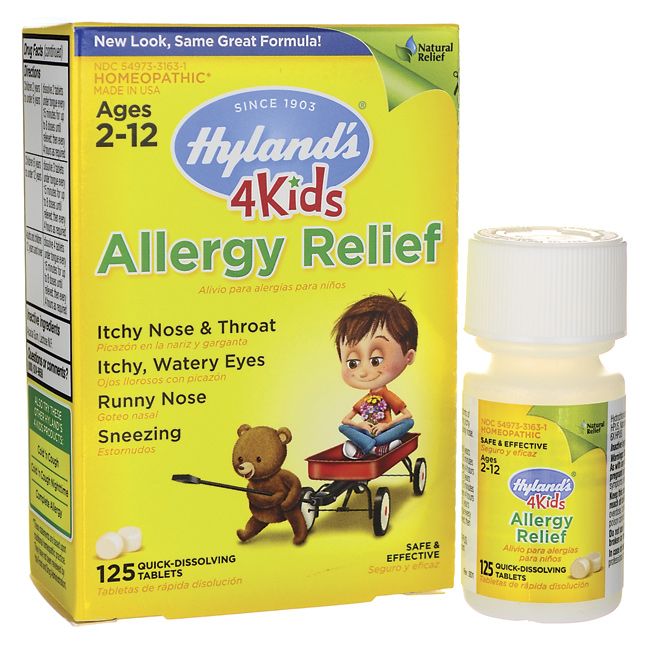
It may take several weeks for your symptoms to subside, but they are likely to be better kept under control when you tackle the root causes. Here are nine ways to get natural allergy relief.
1. Eat an Anti-Inflammatory, Alkaline Diet
First and foremost, start eating an anti-inflammatory diet to reduce your risk for allergies and many other health problems. Caring for your body with nutrient-dense foods gives your immune system the ability to repair itself, bringing it back into balance so it can fight off common allergies in your environment.
Here are some of the best foods and ingredients to incorporate into your diet to help you beat allergies:
- Garlic — What’s so fantastic about garlic? Garlic is a natural antibiotic that helps ward off infections, viruses and even allergies. Eating or juicing two raw cloves of this powerful antioxidant may literally keep the doctor away.
 Some people choose to take garlic supplements because they don’t want to smell like garlic, but the supplements do not work as well as the real herb does, so don’t be deceived by this. Raw garlic eaten every day helps fight off all types of allergies because it boosts your immune system immensely.
Some people choose to take garlic supplements because they don’t want to smell like garlic, but the supplements do not work as well as the real herb does, so don’t be deceived by this. Raw garlic eaten every day helps fight off all types of allergies because it boosts your immune system immensely. - Lemons — As most of us know, an alkaline body means better balance and immune function. Lemons and limes are excellent immune-boosting fruits and used for various afflictions, including allergies. Both of these fruits are loaded with vitamin C and immune-boosting antioxidants. Drinking lemon water throughout the day detoxifies the body and rids it of impurities. Mix the juice of one or two lemons or limes with olive oil to make a wonderful-tasting dressing for salads and veggie sandwiches.
- Green leafy vegetables — Leafy greens (including spinach, kale, collard greens, romaine, arugula and watercress) are great sources of essential vitamins, minerals, antioxidants and enzymes that aid detoxification and help reduce inflammation.

- Probiotic-rich foods — Probiotic foods support immune health and can help repair a damaged intestinal lining. Examples include kefir, sauerkraut, kimchi, natto, yogurt, raw cheese, miso and kombucha.
- Bone broth — Bone broth, made from beef and chicken stock, is rich in many minerals and amino acids that support the treatment of leaky gut, thereby helping strengthen the immune system.
- Coconut milk — The best alternative for cow’s milk is coconut milk, which is free of dairy, lactose, soy, nuts and grains.
- Almond butter and seeds — For people allergic to peanuts and peanut butter, almond butter is a safe and healthy alternative that provides healthy unsaturated fatty acids, fiber, minerals like riboflavin and magnesium, and even some antioxidants. Flaxseeds, chia seeds, pumpkin seeds and sunflower seeds are also great sources of healthy fats and fiber.
- Gluten-free flours/grains — Instead of using wheat flour when you cook or bake, try coconut flour, almond flour, spelt flour, oat flour and rice flour, which are all gluten-free.

- Breast milk — Studies shows that exclusive breastfeeding seems to have a preventive effect on the early development of asthma and atopic dermatitis.
Although it’s not abundant in many foods, vitamin D is also important for immune function and may help manage allergy symptoms. In fact, certain studies have shown that children who live farther from the equator are more likely to develop allergies and suffer higher rates of hospital admissions due to allergic reactions.
You can get enough vitamin D by spending about 15 minutes in the sun most days without sunscreen and by eating foods like whole milk and some mushrooms for natural allergy relief.
2. Local Raw Honey (Bee Pollen)
Considering how good it tastes, having some raw honey every day to help control seasonal allergies may sound too easy to actually work well, but don’t discount this ancient remedy. Taking a tablespoon of local, raw honey every day helps your body build a tolerance to the local pollen that is running amuck on your sinuses.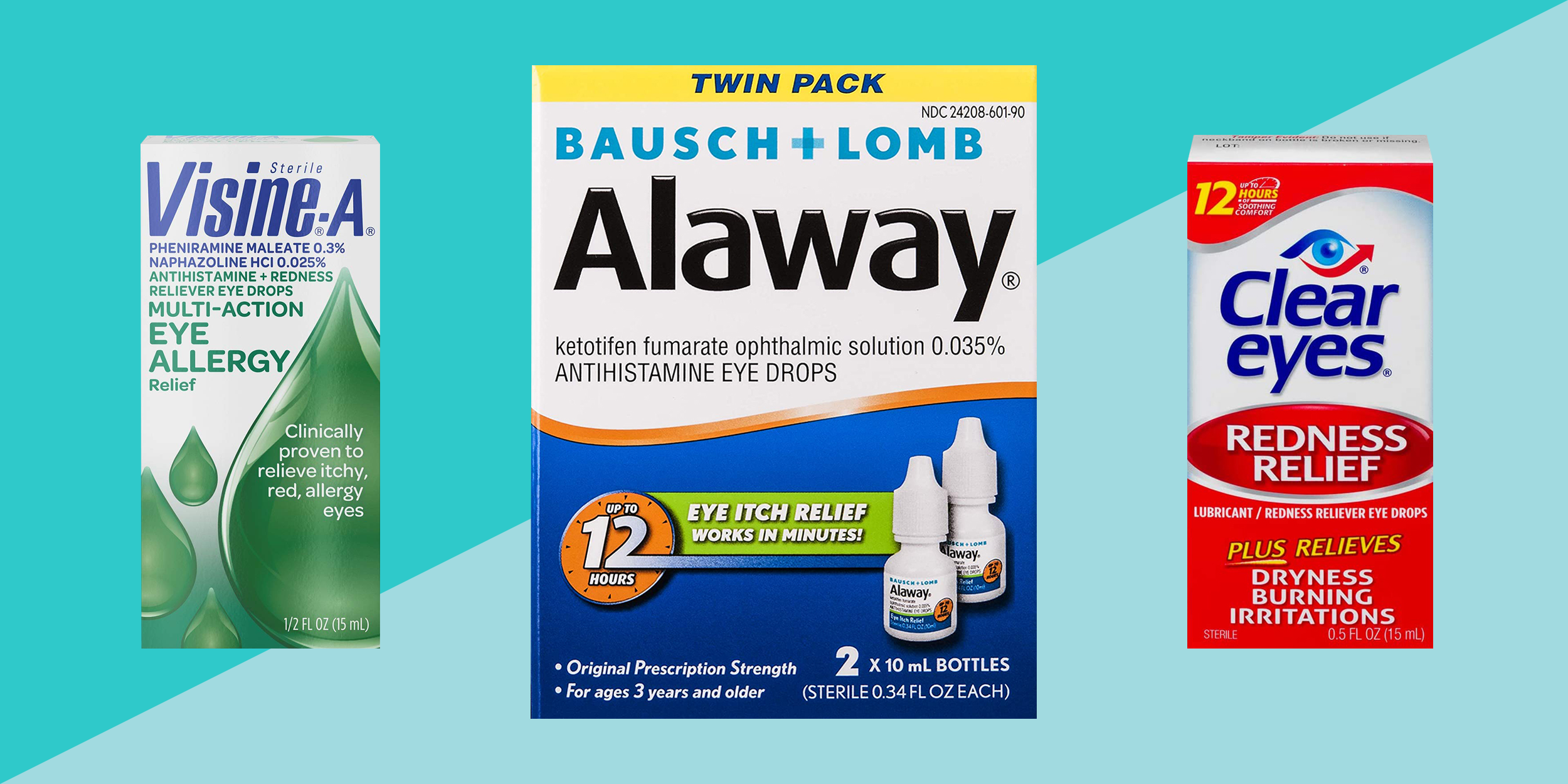
Researchers involved in a study published in International Archives of Allergy and Immunology discovered that patients taking honey “reported a 60 percent lower total symptom score, twice as many asymptomatic days, and 70 percent fewer days with severe symptoms.” They also used 50 percent less antihistamines compared to the control group that took conventional meds.
Try taking one tablespoon of raw local honey daily, such as by stirring some into tea, adding some to oatmeal along with cinnamon, or putting some in your smoothies.
What makes raw honey so powerful at reducing allergies? One reason is because it contains bee pollen, which is known to ward off infections and allergies and boost immunity.
The bees living in your area go from flower to flower collecting pollen that you are suffering from. It would make sense then that eating local raw honey will help build up your immunity to local pollen.
Honey also contains many enzymes that supports overall immune function, which helps with allergy relief.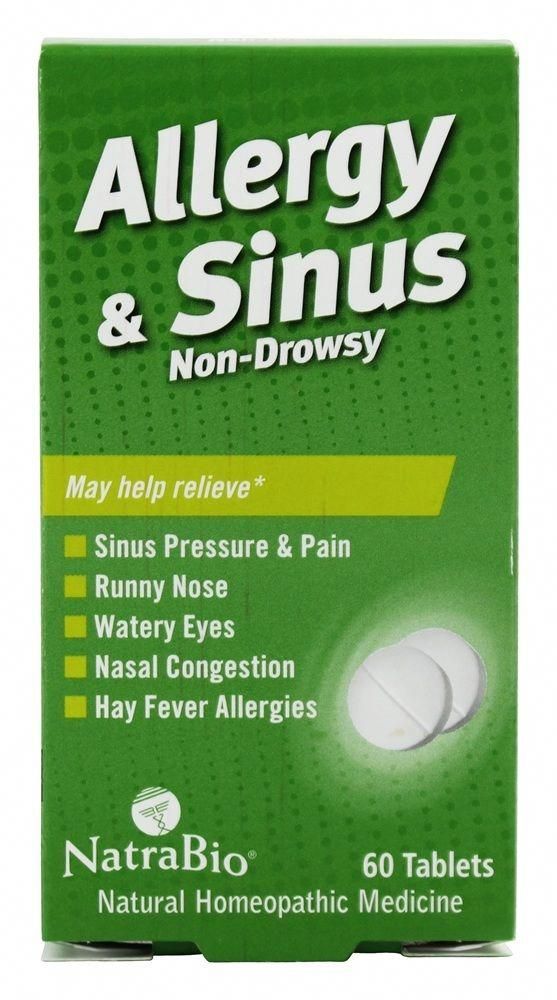
3. Apple Cider Vinegar (ACV)
You can now find high-quality apple cider vinegar in most supermarkets, which is great considering it can help break up mucus and support lymphatic drainage.
Drinking a glass of water with a teaspoon of ACV and some fresh lemon juice is one of the best ways to wake up every morning. At the first sign of an allergy attack, put one teaspoon of ACV in your neti pot solution for a natural “sinus flush.”
4. Quercetin
Quercetin is a polyphenol antioxidant that is naturally found in plant foods, such as cruciferous vegetables (like broccoli or cauliflower), onions/shallots, green tea and citrus fruits. Considered a bioflavonoid that stabilizes the release of histamines, it helps naturally control allergy symptoms.
According to a 2020 study, quercetin has anti-allergic functions that are known for inhibiting histamine production and pro-inflammatory mediators. Another study found evidence that quercetin is effective at reducing congestion because it helps calm down hyperactivity of the airways.
It is so powerful that researchers have found evidence suggesting that quercetin can help control peanut allergies, the leading cause of life-threatening/fatal allergy attacks. Various sources suggest that it is best to use quercetin as a long-term remedy, since it can take several months of use to start working.
People prone to seasonal allergies should start to take it a few weeks before spring arrives when trees and plants start to bloom.
5. Neti Pot
What is the best allergy relief for a runny nose? Neti pots are a natural remedy for allergies and many respiratory conditions because they help clear the sinuses and remove congestion.
Use of neti pots has been shown to help improve quality of life in sufferers of respiratory illnesses and cause little to no side effects.
Clearing the nasal passages of allergens and irritants, this form of “sinus irrigation” originated in the Ayurvedic medicine tradition hundreds of years ago. People living in India have been receiving astounding results from using neti pots for centuries, and now you can, too.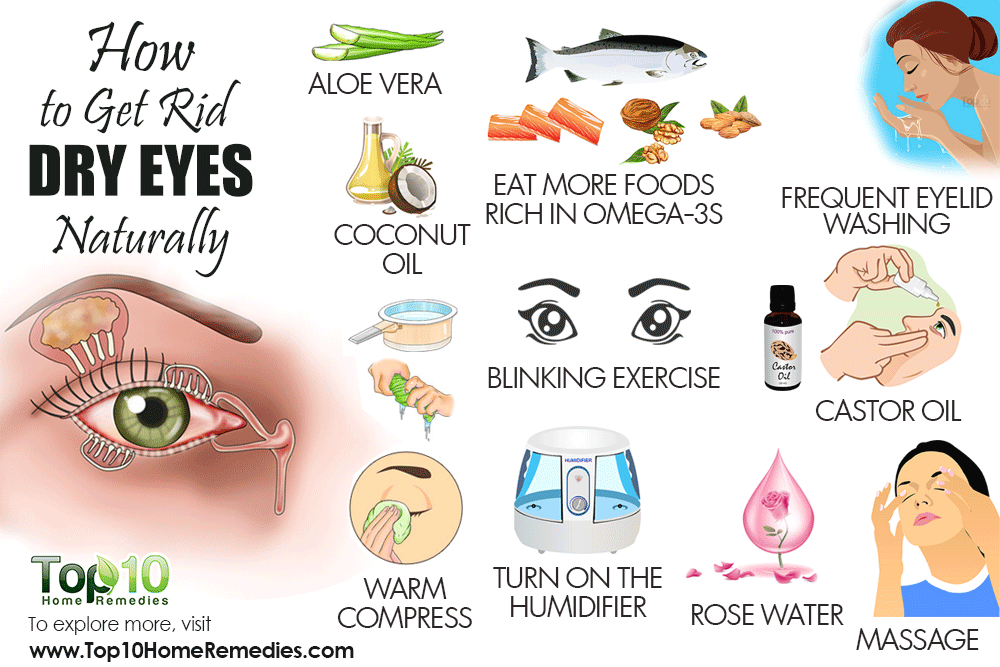
Thankfully, this “alternative” approach to preventing congestion and allergies has now become more mainstream. David Rabago, MD, has conducted several studies on the subject and has proved clinically that using a neti pot is beneficial for preventing and treating several upper respiratory conditions, including chronic and acute sinusitis, the common cold, and seasonal allergies.
When you use a neti pot, make sure that the water is distilled and as sterile as possible. Tap water is full of chlorine and fluoride and can actually aggravate your sinuses, so it shouldn’t be used.
If you don’t want to use a neti pot, you can also try a salt water sinus rinse by mixing sea salt with warm water and sucking it up one nostril.
6. Stinging Nettle
Research has specifically shown that stinging nettle leaf naturally controls histamines, which is why a growing number of doctors recommend taking a freeze-dried preparation before hay fever season begins. It can also be used as a tea or in tincture form, including in homeopathic remedies.
According to sinus allergy experts, other herbal remedies that may help control symptoms by supporting the immune system and reducing congestion include:
- Ginger
- Turmeric
- Yarrow
- Reishi mushrooms
- Astralagus
- Perilla (Perilla frutescens)
- Sea buckthorn (Hippophae rhamnoides)
- Butterbur (Petasites hybridus)
- Horehound (Marrubium vulgare)
7. Eucalyptus Oil and Frankincense Oil
One interesting study evaluated the effect that various essential oils had in killing the highly allergic house mites and found that eucalyptus oil ranked among some of the most potent. Essential oils for allergies work by reducing inflammation and improving detoxification of harmful bacteria, parasites, microorganisms and toxins that can trigger attacks.
You can use eucalyptus oil for seasonal allergy relief in a variety of ways:
- You can put several drops of eucalyptus oil into your neti pot, inhale it via a diffuser or use it in your laundry detergent as an antimicrobial agent.

- For an eco-friendly, biodegradable addition to your natural detergents, add 25 drops of eucalyptus oil to each load of wash during allergy season, especially if you or the kids are running around outside.
- If your allergy symptoms are going strong, mix eucalyptus oil with coconut oil, rub it on your chest and behind your ears, and diffuse it in the air during the day and while sleeping.
Another powerful essential oil for managing allergies is frankincense oil. The almost unbelievable cancer-killing capacity of Indian frankincense has been well-established in scientific literature for several years, but its life-giving power doesn’t end there.
- In a study published by Phytotherapy Research, when mice took 1–10 milligrams of frankincense orally, it was discovered that multiple levels of their immune systems were stimulated, including IgG, IgM and interferon. This means that frankincense has seriously powerful effects when it comes to supporting the immune system.

- To implement it into your natural health regimen, simply rub frankincense behind your ears and on your chest several times per day, or diffuse frankincense essential oil in your home and office for about three hours daily.
8. Probiotics
It’s now become common knowledge that a strong immune system starts with a healthy gut. More than 80 percent of your immune function is stored in your gastrointestinal (GI) tract. It should be no wonder that research keeps surfacing that links probiotic supplement use to reduced risk of allergies.
Probiotics are beneficial “good bacteria” that live inside your GI tract and help defend you against infections, viruses, allergies and more. They are increasingly being employed to correct gut dysbiosis (an imbalance of bacteria in the microbiome) and, in turn, to modulate allergic diseases.
They are so effective that a study published in the journal Pediatrics discovered that women who regularly take probiotics during pregnancy significantly reduce their children’s risk of developing allergies.
I highly recommend getting your soil-based organisms through probiotics in supplement form or from probiotic foods, which are sold at farmers markets and can even be made from foods growing in your own local garden.
9. Cleaning Up Your Home to Remove Irritants
There are many things you can do to limit the amount of irritants and triggers you’re exposed to, such as dust, fragrances, etc. Here are some of the most effective changes to make to your home, cleaning and beauty routines for natural allergy relief:
- Avoid burning scented candles in your home or wearing perfume.
- Use hypoallergenic beauty products, such as lotions, shampoos, etc.
- Use laundry detergent that is fragrance-free and dye-free (or hypoallergenic). Avoid dryer sheets and softeners.
- Use a humidifier to help cleanse the air in your home. You may also want to use a high-efficiency particulate air (HEPA) filter.
- Vacuum regularly to remove dust, and wash things like sheets, towels and blankets often.

- During times of the year when allergens outdoors are high, keep windows closed.
- Be careful about how indoor plants and pets may affect your allergies.
Risks and Side Effects
While most of the supplements and tips described above can provide natural allergy relief safely, there are some precautions to keep in mind.
When allergies are mild or moderate, they are usually not very threatening and go away with time. However, severe allergic reactions can be dangerous and require medical attention.
Anaphylaxis is the term for a severe allergic reaction, which can happen due to contact with food allergens, drugs/medications or insect stings. Symptoms usually affect the lungs, blood vessels or heart and can include:
- trouble breathing
- tightness in the lungs
- chest pains
- blood pressure changes
- dizziness
- fainting
- rash
- vomiting
If you or your child experience these symptoms, head to your doctor or the emergency room right away to prevent complications.
What can you do for severe allergies? Your doctor may need to prescribe allergy shots or prescription asthma medications, such as bronchodilators and inhaled corticosteroids.
Discuss these options with your health care provider, and consider trying the natural allergy relief remedies described above in addition to using medications.
Conclusion
- Allergies are due to hypersensitivity of the immune system that causes the release of damaging histamines. This can affect the whole body, especially the skin, eyes, nasal passageways and lungs.
- Wondering how to help get rid of allergies? Millions of Americans turn to Benadryl, Claritin and other products to try and find some relief from their allergy symptoms. The good news is that you might not necessarily need to take any medications, since there are many natural allergy relief remedies you can try first.
- Natural remedies for allergies include avoiding triggers and eating an anti-inflammatory diet, among other natural allergy relief options.

- Some of the most common causes of allergies/triggers include pollen, animal fur, dust, mold, insect bites, medications or particular foods.
- For help with natural allergy relief, you can consume raw honey and apple cider vinegar, take quercetin supplements and stinging nettle, and use essential oils like frankincense and eucalyptus.
How to treat eye allergies with folk remedies
Allergy in the eye area can be caused by anything – household chemicals, animal hair, dust, and various food products. As for women, decorative cosmetics often cause allergies in the eyes.
The main signs of an allergy that can occur in the eyes are:
- puffiness of the eyelids;
- peeling;
- eye discharge;
- dry skin around the eyes;
- itching sensation;
- tearing that is constantly increasing;
- red spots around the eyes;
- sensation of the presence of a foreign body in the eye.

If you notice one or more of the above symptoms, be sure to consult an allergist or ophthalmologist. Only they can identify the cause and prescribe an effective treatment, as well as recommend this or that folk remedy as an additional therapy.
Below we will consider what traditional medicine recipes can be used in order not to harm your health and alleviate some of the symptoms of allergies:
The first remedy that helps well is a decoction of chamomile. It perfectly removes redness and inflammation of the skin of the eyelids, is a natural antiseptic. In order to prepare a decoction, you need to pour a tablespoon of chamomile color with a glass of boiling water, and then insist for 20 minutes. The procedure for washing the eyes with a decoction of chamomile must be repeated 3 times a day.
It is also possible to effectively relieve inflammation of the eyelids with a weak solution of boric acid, if allergic reactions are accompanied by purulent discharge from the eyes, then apply a lotion of cottage cheese on the eyelids at night.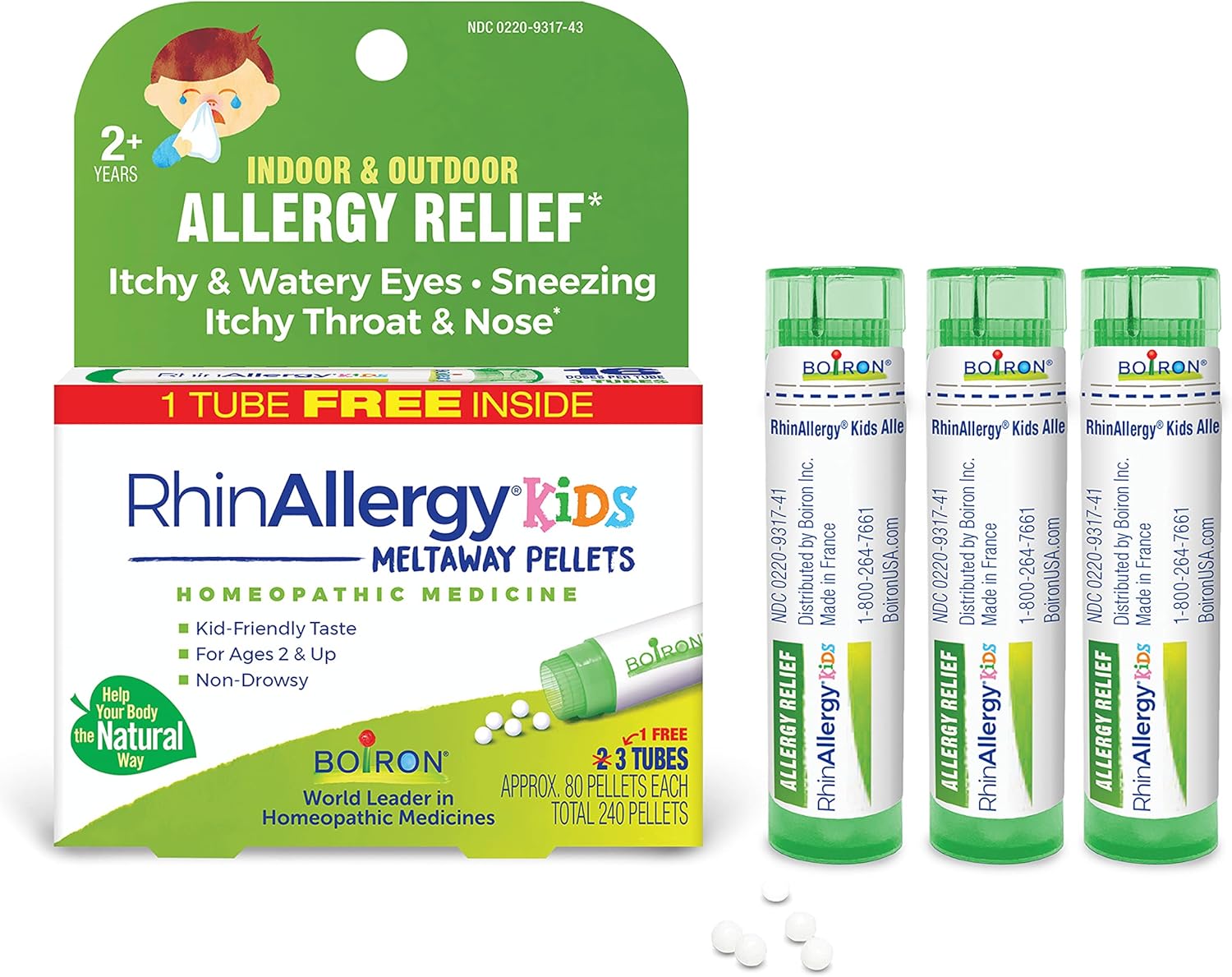 To do this, just wrap the fresh curd mass in gauze – and the lotion is ready!
To do this, just wrap the fresh curd mass in gauze – and the lotion is ready!
Potato, apple and cucumber will perfectly relieve inflammation and redness. Take fresh ingredients, grind on a fine grater, and wrap the resulting slurry in gauze. Lotions from the mixture should be applied to the inflamed eyelids for 15-20 minutes. If you do not have the opportunity, time or desire to grind foods, you can try applying round slices of potatoes, cucumbers or apples to swollen eyelids, but an effective result in this case is not guaranteed.
Onion is great for redness in the eyes due to allergies. To do this, just take one onion and boil for some time until tender, then mix with a small amount of honey. The mucous membrane of the eye should be washed about four times a day, repeating the procedure daily until complete recovery.
Dill seed tincture is another remedy that can help with eye inflammation caused by an allergen reaction. One tablespoon of dill seeds must be poured into 1. 5 cups of boiling water and let it brew. Strain the decoction through cheesecloth. Wash your eyes with dill water 4-5 times daily.
5 cups of boiling water and let it brew. Strain the decoction through cheesecloth. Wash your eyes with dill water 4-5 times daily.
Kalanchoe pinnate juice can help if you have a clear inflammatory process and swelling of the eyelids. Break off a fresh leaf and twist it through a meat grinder. Squeeze out the juice. Soak a cotton swab in the freshly squeezed juice and wipe your eyes. Repeat the procedure 2-3 times during the day.
Sometimes the allergy is so severe that conjunctivitis can develop. If you have just such a manifestation of an allergic disease in front of your eyes, folk remedies are also able to immediately come to the rescue.
Let’s list the most effective recipes:
A decoction of millet groats can become a very effective remedy for watery eyes, which is a consequence of an allergic reaction. They need to wash the mucous membrane of the eyes about 30-40 minutes before that sleep. After a while, the allergic reaction should go away.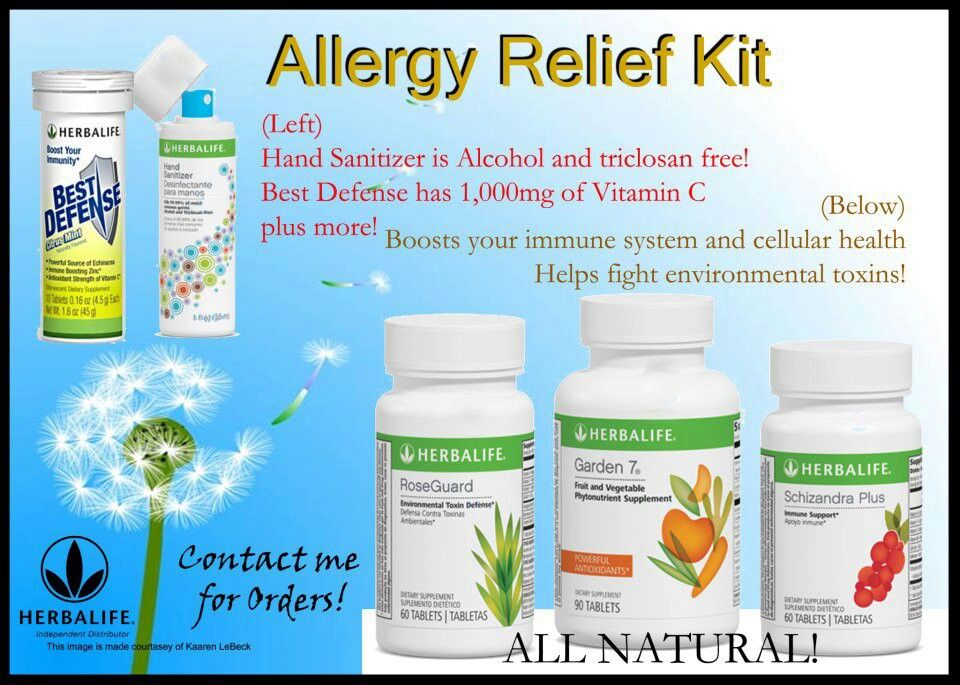
For compresses and eyewashes, we recommend preparing a decoction of blue cornflower flowers, herbal collection of toadflax, and black elderberry flowers. Take these ingredients in a ratio of 1 to 1, 10 grams each, pour two cups of boiling water and let them brew. The resulting infusion should be filtered and applied to the eyelids or rinsed eyes.
For dressings in case of inflammation of the pituitary membrane of the eyeball, you can also use herbal infusion of blue cornflower flowers. To do this, collect 1 tablespoon of flowers, pour it with two cups of boiling water and insist.
As you can see, folk remedies for allergies can alleviate the course of the disease. But we remind you that self-treatment should be carried out only after the permission of an allergist and in combination with treatment with traditional medicines.
How to cure allergic conjunctivitis with folk remedies
Allergic conjunctivitis is an inflammatory process that develops in the mucous membrane of the eye. This disease occurs as a result of interaction with an allergen. In this case, the development of hyperemia and swelling of the conjunctiva is observed. Treatment of conjunctivitis may be accompanied by the use of folk remedies.
This disease occurs as a result of interaction with an allergen. In this case, the development of hyperemia and swelling of the conjunctiva is observed. Treatment of conjunctivitis may be accompanied by the use of folk remedies.
Allergic conjunctivitis in children and adults
Diagnosis of the disease is carried out on the basis of skin tests, various studies and allergic tests.
In this article
- Allergic conjunctivitis in children and adults
- Causes of allergic conjunctivitis in children and adults
- Development of allergic conjunctivitis
- What are the signs of infection with allergic conjunctivitis
- Diagnostic tests for chronic allergic conjunctivitis
- Home treatment of allergic conjunctivitis
- Precautions when using folk remedies
If “allergic conjunctivitis” has been diagnosed, a variety of drugs are usually prescribed for treatment, which are taken orally and topically, eliminating allergy symptoms and suppressing the effect of the allergen.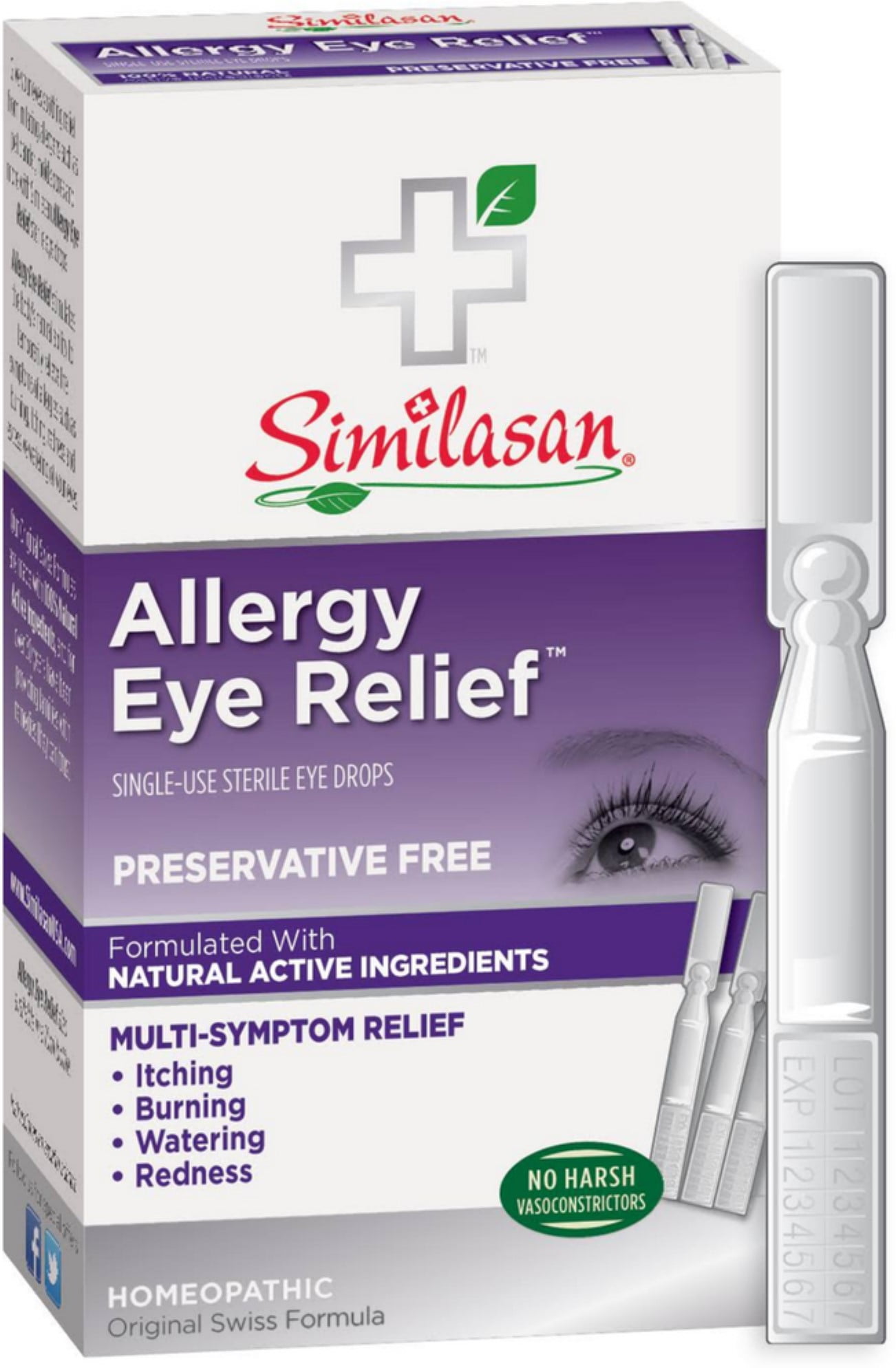
According to statistics, about 15% of the population suffers from allergic conjunctivitis. It is a rather serious problem. Allergic conjunctivitis is equally common in men and women.
In general, an allergic reaction that occurs in the eyes, in the vast majority of cases, is always accompanied by the appearance of conjunctivitis, eyelid dermatitis and other diseases of the visual organs. Often the disease occurs together with bronchial asthma and rhinitis. Chronic conjunctivitis, if left untreated, can lead to serious vision problems.
Causes of allergic conjunctivitis in children and adults
A common feature of all types of conjunctivitis is high sensitivity to a wide range of factors. The anatomical structure and location of the eye explain the inevitability of contact of the visual organs with the allergen. The only question is the body’s resistance to its effects.
The following types of disease are distinguished:
- Seasonal conjunctivitis: pollinosis (hay fever, reaction to pollen) is provoked by pollen allergens common at the time of flowering plants; in about 7% of people, the disease manifests itself in the spring, in the vast majority (75%) – in the summer, in the rest – in the autumn, in the first half of September.

- Spring keratoconjunctivitis: not yet well understood. It is known that the disease is exacerbated in the spring-summer period, in the fall it declines. It can go away on its own during puberty – this allows us to say that its development is largely influenced by the endocrine factor.
- Large papillary conjunctivitis: provoked by contact lenses, eye prostheses and other foreign bodies that contact and irritate the eye, postoperative sutures, etc.; in this case, the inflammatory process is accompanied by the appearance of flattened formations on the mucosa;
- Drug conjunctivitis: This form of the disease occurs as a local allergic reaction in response to medication. Its appearance can be facilitated by the treatment of conjunctivitis without consulting a doctor, intolerance to the drugs used, and the inclusion of several drugs incompatible with each other in the treatment regimen. Usually this form of allergic conjunctivitis appears when using antibacterial and antiviral drugs of external action.

- Chronic allergic conjunctivitis. The list of allergens is quite wide: it can be both animal hair and low-quality cosmetics.
- Atopic keratoconjunctivitis: develops with immunological reactions. As a rule, it occurs as a secondary symptom of atopic dermatitis and urticaria.
Development of allergic conjunctivitis
The main factor that provokes the onset of conjunctivitis of this type is the contact of the allergen with the mucous membrane of the eye. This leads to degranulation of mast cells and other processes, the result of which is an inflammatory-allergic reaction.
The severity of the course of an allergic disease depends on the amount of the allergen and the degree of vulnerability of the body. The rate of development of the reaction is different: it can appear both almost immediately after contact with the allergen (about half an hour), and after a fairly long period of time (about two days). This classification is of great importance for the selection of a treatment regimen.
This classification is of great importance for the selection of a treatment regimen.
The classification of allergic conjunctivitis is as follows. This disease in an allergic form can manifest itself as hay fever, spring or atopic keratoconjunctivitis, drug or chronic conjunctivitis. According to the nature of the course, the allergic form of the disease can be acute, subacute or chronic. There is also a division according to the time of occurrence – seasonal or year-round.
What are the signs of infection with allergic conjunctivitis
Usually, allergic conjunctivitis affects both visual organs. The option when the disease occurs in only one eye is atypical. This happens when the allergen was introduced pointwise, for example, by hand.
The disease is characterized by itching in the eye area, burning and heaviness of the eyelids, profuse release of tears, hyperemia of the mucous membrane of the eyes. If allergic conjunctivitis is severe, photophobia, blepharospasm, and ptosis develop.
If allergic conjunctivitis is severe, photophobia, blepharospasm, and ptosis develop.
Particular discomfort in allergic conjunctivitis is caused by severe itching, due to which the patient is forced to rub his eyes, which, in turn, only intensifies the clinical manifestations. At the same time, discharge appears from the eye: as a rule, mucous, transparent, in rare cases – viscous, with the inclusion of pus, more filiform. If there is a layering of the infection, a purulent secret appears in the corners of the eyes. In children, allergic conjunctivitis proceeds in a similar way.
In addition, with some types of allergic conjunctivitis, there is damage to the cornea, eyelids, retina, and optic nerve. If the disease proceeds in an acute form, then it may be accompanied by anaphylactic shock, Quincke’s edema or urticaria.
If the disease does not go away within six months, we can talk about its chronic nature.
Chronic allergic conjunctivitis manifests itself rather poorly: there is periodic itching of the eyelids and their redness, burning, lacrimation, and slight discharge.
Any of these symptoms can be removed if you correctly combine traditional medicine and drugs recommended by a specialist.
Diagnostic methods for chronic allergic conjunctivitis
Diagnosis of the allergic form of inflammation of the conjunctiva can only be carried out by an ophthalmologist and an allergist-immunologist. This is especially important if the history clearly shows the connection between inflammation of the conjunctiva and exposure to the allergen. To confirm the diagnosis, specialists carry out:
- Ophthalmological examination: during it, changes in the conjunctiva are detected (in particular, the presence or absence of edema, hyperemia and other signs). The study of conjunctival scrapings on a microscope reveals eosinophils and an increase in IgE in the blood, which indicates infection with allergic conjunctivitis.

- Allergological examination: in order to establish the causes of the onset and development of the disease, a number of tests are taken: elimination (excludes contact with a possible allergen) and exposure (it consists in repeated exposure to the alleged allergen after the extinction of all symptoms). When the acute manifestation of symptoms subsides, skin-allergic tests are performed. With a temporary retreat of the disease, provocative tests are carried out: conjunctival, nasal and sublingual.
- Examination in the laboratory. If allergic conjunctivitis is chronic, eyelashes are examined for traces of Demodex mites.
Usually the prognosis for the treatment of chronic allergic conjunctivitis is favorable. If you do not pay attention to the disease, it is possible to attach various infections that can lead to serious problems, up to a decrease in visual acuity. To prevent this, you can use preventive measures.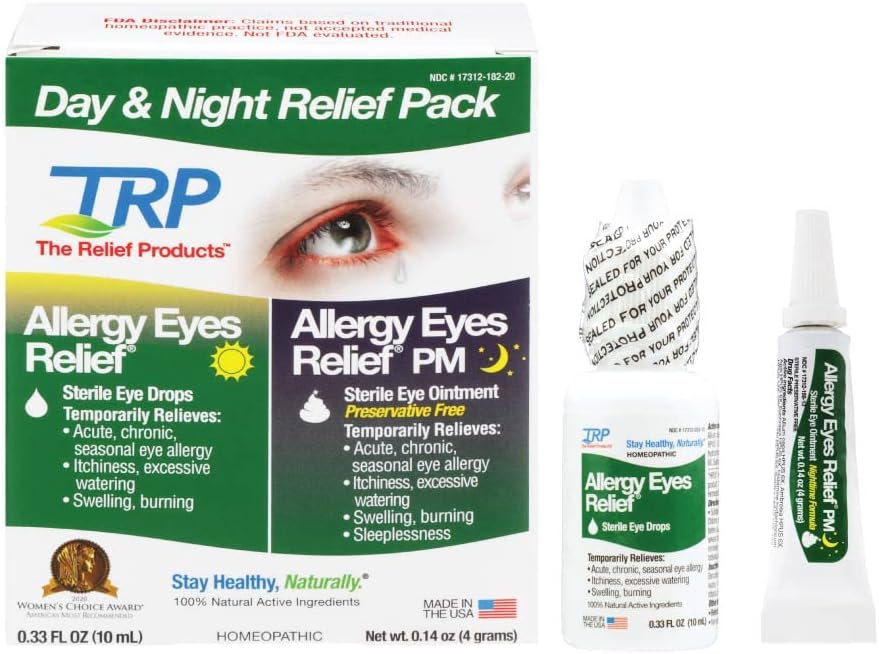 Among them is the absence of contact with known allergens. If allergic conjunctivitis relies on seasonality, preventive courses of desensitizing therapy should be used. At the first signs of the development of the disease, it is worth contacting an allergist and an ophthalmologist.
Among them is the absence of contact with known allergens. If allergic conjunctivitis relies on seasonality, preventive courses of desensitizing therapy should be used. At the first signs of the development of the disease, it is worth contacting an allergist and an ophthalmologist.
Treatment of allergic conjunctivitis at home
As mentioned above, allergic conjunctivitis is characterized by severe itching and swelling of the eyelids. In order for these symptoms to disappear as soon as possible, first of all, contact with allergens must be excluded. If attacks of allergic reactions have happened before, then the list of necessary antihistamines that help get rid of adverse symptoms is probably known. If this happened for the first time, it is better not to self-medicate and immediately contact a specialist. He will carry out the necessary diagnostic measures and select the correct treatment with medication and folk remedies.
You can supplement the medical treatment of allergic conjunctivitis with traditional medicine, only after consulting with your doctor. some say that cool compresses and herbal decoctions used to wash the eyes help well.
some say that cool compresses and herbal decoctions used to wash the eyes help well.
One of the most effective means of getting rid of allergic conjunctivitis is aloe leaf extract. In folk medicine, aloe has been used for a long time, the juice of this plant is excellent for inflammation of the mucous membrane of the eye. The recipe for a healing remedy is extremely simple. All you need to do is moisten a cotton pad or a piece of gauze with the juice of the plant and apply it on your eyes for 5-10 minutes as a compress.
You can also prepare an eye wash solution for allergic conjunctivitis. To do this, you need to take a few freshly cut aloe leaves, place them in a container and pour boiling water over them. When the infusion has cooled and becomes barely warm, it can be used to wash the eyes. It is necessary to repeat this procedure 3-4 times a day.
Compresses and infusions of aloe go well with artificial tears.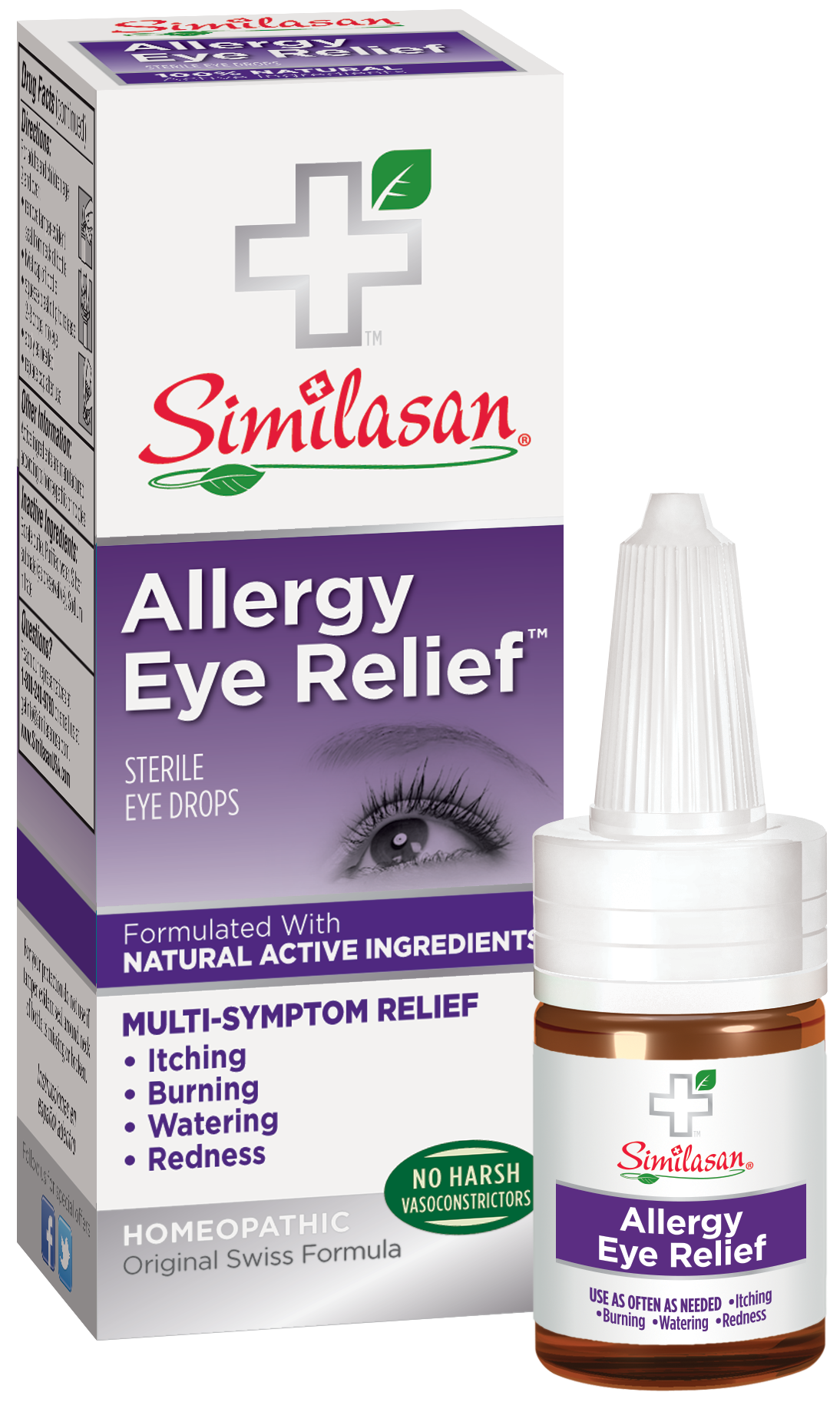 There is a wide range of such products in the pharmacy, your choice should be based on individual characteristics and recommendations of an ophthalmologist. These drugs are released without a prescription, but you should not neglect the advice of a specialist.
There is a wide range of such products in the pharmacy, your choice should be based on individual characteristics and recommendations of an ophthalmologist. These drugs are released without a prescription, but you should not neglect the advice of a specialist.
To remove the swelling of the eyelids, which occurs in chronic allergic conjunctivitis, you can use tea leaves, from which compresses are made. To prepare them, you need to brew strong tea, then soak a cotton pad in it and apply it on your eyes for 20 minutes. It is recommended to repeat the procedure up to 5 times a day.
Another good folk remedy for conjunctivitis is chamomile.
To do this, you need to prepare an infusion. You can use packaged and loose chamomile, sold in a pharmacy, make compresses and solutions for washing. A decoction with a temperature of 30 degrees has healing properties: a warmer liquid can damage the mucous membrane of the eye.
For washing, it is necessary to moisten a cotton swab and apply to the eyes. This will help get rid of purulent and mucous discharge. The procedure should be repeated 4 times a day. For compresses, you can use the same infusion. Gauze is moistened in a decoction and applied to the eyes for 15 minutes. Chamomile goes well with aloe, kalanchoe and other plants used to treat allergic conjunctivitis as part of traditional medicine.
Precautions when using folk remedies
Usually, folk methods of treatment and herbs do not provoke the appearance of negative reactions. However, it is not worth treating conjunctivitis with folk remedies without consulting a specialist. Only a doctor is able to assess the possible risks and include in the drug treatment regimen those traditional medicines that will not cause harm and help get rid of viral conjunctivitis faster.
To avoid consequences, it is worth conducting a test.

 After you make a nice cup of chamomile tea, fully cool the tea bags and place them on your eyes. If it is pink eye you are concerned about, be sure to use black tea bags. See Tea Bags – A Natural Remedy for Pink Eye.
After you make a nice cup of chamomile tea, fully cool the tea bags and place them on your eyes. If it is pink eye you are concerned about, be sure to use black tea bags. See Tea Bags – A Natural Remedy for Pink Eye.

 Some people choose to take garlic supplements because they don’t want to smell like garlic, but the supplements do not work as well as the real herb does, so don’t be deceived by this. Raw garlic eaten every day helps fight off all types of allergies because it boosts your immune system immensely.
Some people choose to take garlic supplements because they don’t want to smell like garlic, but the supplements do not work as well as the real herb does, so don’t be deceived by this. Raw garlic eaten every day helps fight off all types of allergies because it boosts your immune system immensely.